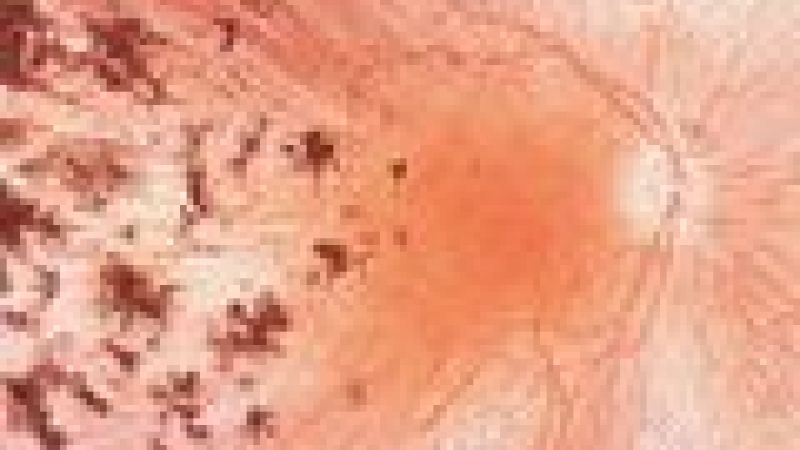11/05/15
Scientists from Switzerland and Germany have successfully restored vision to blind mice, by stimulating their retinal cells with a light-sensing protein. In hereditary blindness, a condition that affects millions of people worldwide, the light-sensing cells of the eye are lost leaving behind only retinal cells that cannot detect light. Introducing a light-sensing protein to these remaining cells effectively turned them into replacement photoreceptors, allowing the mice to see under daylight conditions, react to visual stimuli and learn visually triggered behaviours.
"The new therapy can potentially restore sight in patients suffering from any kind of photoreceptor degeneration," lead author Sonja Kleinlogel explains. "However, it will take at least another two or three years before the new light antenna can be tested in the clinical setting." Furthermore, the novel principle opens a whole palette of new possibilities to potentially treat conditions such as pain, depression and epilepsy.
http://www.sciencedaily.com/releases/2015/05/150507153952.htm
Bats can avoid 'blurry' echolocation signals by adjusting how open their mouth is and thus modifying their navigational signals.
Researchers studied both wild and captive bats as they flew, and observed that when flying upwards the animals narrowed their mouths to project their ultrasound beam more widely. The team writes that these changes in gape allow the animals to “zoom in” on their view of an area, potentially reducing the amount of distracting echoes in a tight space.
http://news.sciencemag.org/plants-animals/2015/05/bats-open-wide-focus-their-ultrasonic-beams
13/05/15
Providing some additional evidence of empathy in rats, scientists have found they would rather help save each other than eat chocolate. To test this the scientists created a box whereby a dry rat could open a door to allow a "drowning" rat to escape (in reality the rat is clinging to a ledge treading water, but the inability to permanently get onto dry land will cause some distress that the other rat appears to respond to). The scientists found that if both rats were on dry land then the rat would not open the door, suggesting that it is not merely a case of rats wanting company.
"Next, the team put the rodents to the ultimate test, pitting chocolate against altruism. In this experiment, rats on the dry platform had to choose between two doors, one that allowed their soaked companion to escape from the pool and another that provided access to a tasty chocolate treat. The rodents chose to help their companions before seeking the snack 50% to 80% of the time, showing that the urge to help a fellow rat was at least as strong as the desire for food, the authors say."
Experts at ZSL and the University of Cambridge have shown that cliques form within chacma baboon troops. They observed that these groups often exhibited many of the same characteristics such as boldness or dominance. Interestingly, these cliques did not tend to split along gender lines.
Dr Guy Cowlishaw from ZSL, said: ‘
"Our analysis is the first to suggest that bolder and shyer baboons are more likely to associate with others that share this personality trait. Previous studies in other animals - from chimps to guppies - suggests that time spent in the company of those with similar personalities could promote cooperation among individuals."
14/05/15
Walnuts can slow the growth of bowel cancer by reducing blood supply to tumours shows study in mice. Mice fed walnuts had 10 times more omega-3 in their bowel tumours which reduces inflammation and cuts blood supply. This slows the growth of tumours, the amount of omega-3 was correlated with smaller tumours. Walnuts change the expression of micro-nucleic acids, which affect how genes adapt to environment that can slow down growth of cancer. Research has shown that 30-50 % of bowel cancer in men, and 20 per cent in women can be prevented by changing to a healthier diet and lifestyle.
http://www.dailymail.co.uk/health/article-3079949/A-daily-handful-WALNUTS-slow-growth-bowel-cancer-reducing-blood-supply-tumours.html
A compound found in fish that protects animals from the sun’s UV rays, could one day be used as a sunscreen pill. Some animals don’t need to squeeze sunscreen out of a tube because they produce their own and excrete it through their skin. The gene that provides the capacity to produce the compound, gadusol, may have been inherited from a similar gene found in algae, however, mammals do not have it. Gadusol provides UV-B protection, but may also plays a role as an antioxidant, in stress response, embryonic development and other functions. Researchers have found a way to naturally make gadusol in large quantities using yeast. They hope it may be possible to develop gadusol as an ingredient for many types of sunscreens.
Last edited: 9 March 2022 15:04



